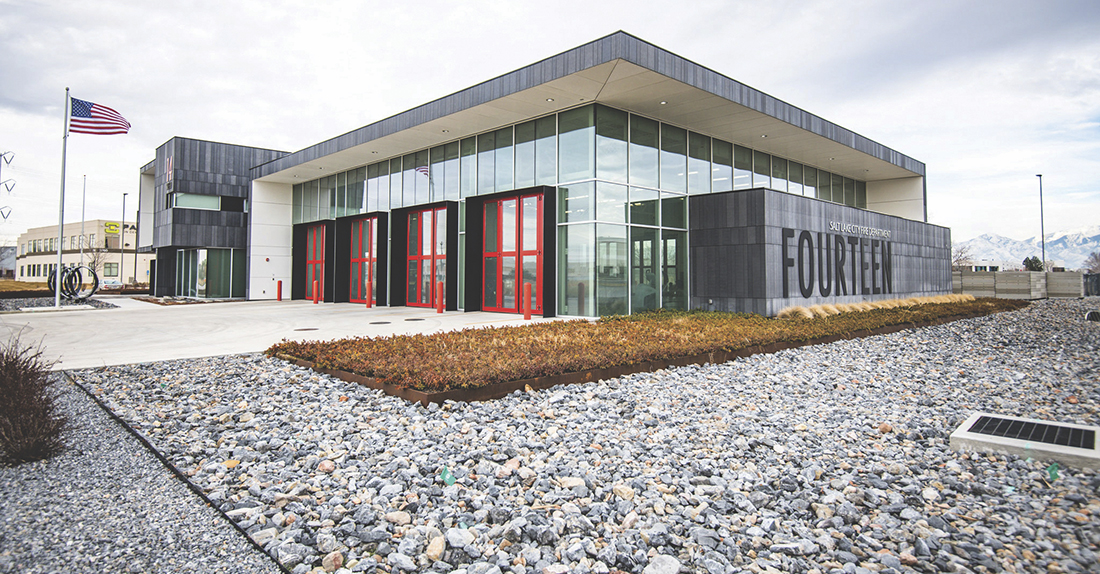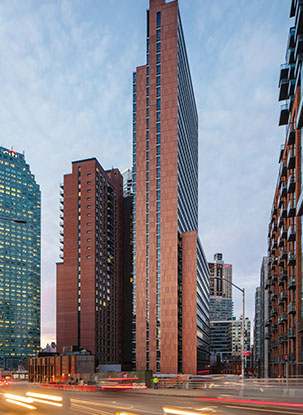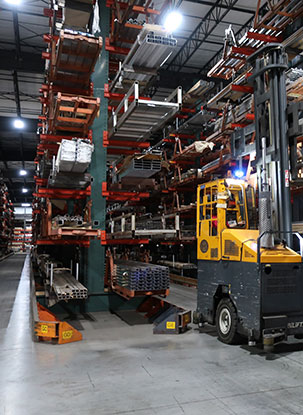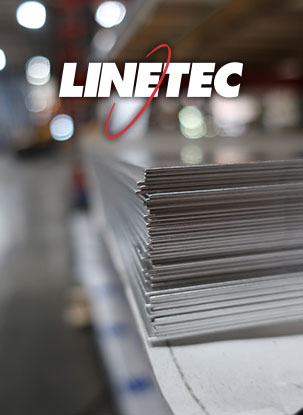PERFORMANCE & LONGEVITY – SPECIFY AAMA-2605 PAINT COATINGS
Not all paint and powder coatings are created equally; not even all coatings that meet the AAMA 2605 specification. This specification requires paint coatings to meet rigorous testing performance standards including more than 2,000 hours of salt spray in accordance with the new ASTM G85, Annex 5 test and 4,000 hours heat- and humidity-resistance. For the most stringent, exterior application be sure the following pretreatment, primer and top coat guidelines are upheld.
 Painted aluminum coatings protect the building from unsympathetic surroundings. High-performance 70% fluorpolymer (PVDF) coatings can be selected in nearly any conceivable color or combination of colors, while shielding the building against weathering, pollution and aging.
Painted aluminum coatings protect the building from unsympathetic surroundings. High-performance 70% fluorpolymer (PVDF) coatings can be selected in nearly any conceivable color or combination of colors, while shielding the building against weathering, pollution and aging.
The first, and arguably, the most important defense against a paint failure is proper pretreatment of the aluminum. Without proper pretreatment, premature failure of the finish system almost is guaranteed. Paint systems are designed to be applied over clean metal that has been properly pretreated. Pretreatment of the aluminum building components is crucial.
The most time-tested, proven pretreatment system for architectural aluminum products is a chrome-based conversion coating, such as chrome phosphate and chrome chromate. This process conforms to ASTM D 1730-03, Type B.
 Offering the longest life-cycle and true sustainability, chrome conversion coatings continue to be recognized by the world-class coating manufacturers, PPG, Valspar, Sherwin Williams and Akzo Nobel, as the most effective, robust pretreatment for aluminum. As a result, products installed along the seacoast and in other harsh industrial environments may not be warranted, or the warranty length and coverage may be compromised, if a chrome pretreatment system is not utilized.
Offering the longest life-cycle and true sustainability, chrome conversion coatings continue to be recognized by the world-class coating manufacturers, PPG, Valspar, Sherwin Williams and Akzo Nobel, as the most effective, robust pretreatment for aluminum. As a result, products installed along the seacoast and in other harsh industrial environments may not be warranted, or the warranty length and coverage may be compromised, if a chrome pretreatment system is not utilized.
.
For critical adhesion between the paint and the aluminum surface, after the part has been pretreated, a primer coat is applied prior to the paint coating application. The primer coat ensures better adhesion of the paint to the surface, increased corrosion resistance, increased paint durability, and provides additional overall protection for the material being painted. Primer is designed to adhere to the aluminum surface and to form a binding layer that is better prepared to receive the paint. Because primers do not need to be engineered to have durable, weathering surfaces, they are instead engineered with specific chemistry to have improved filling and binding properties with the material underneath.
The paint coating is then sprayed to meet the AAMA 2605 specification of a 30-microns or 1.2 mil total film thickness. When the formula of the paint coating dictates, a clear coat is applied over the paint top-coat. This protective layer shields the flake in metallic coatings and increases protection against ultra violet (UV) degradation of highly chromatic and exotic colors.
There are some AAMA 2605 coatings available that do not utilize a primer coat and/or may not contain a 70% fluoropolymer resin system. These coatings may perform satisfactory in color and fade, at least for the first five to ten years. However, it is Linetec’s belief, based on history, manufacturing testing and Linetec’s testing that the most robust paint finish system consists of a chrome conversion pretreatment, an intermediate primer coat, and a 70% fluoropolymer resin-based top coat.








